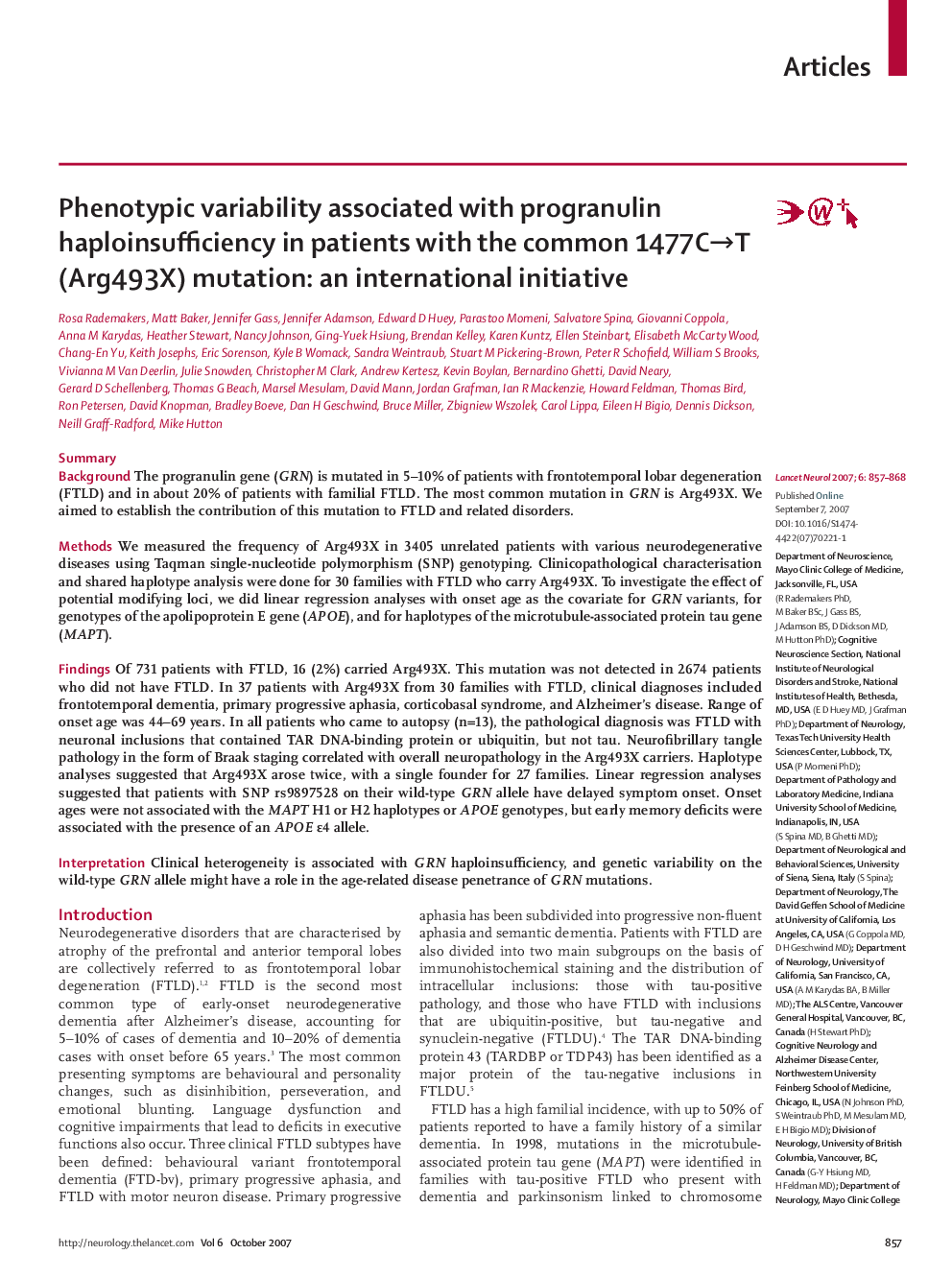| Article ID | Journal | Published Year | Pages | File Type |
|---|---|---|---|---|
| 3067467 | The Lancet Neurology | 2007 | 12 Pages |
SummaryBackgroundThe progranulin gene (GRN) is mutated in 5–10% of patients with frontotemporal lobar degeneration (FTLD) and in about 20% of patients with familial FTLD. The most common mutation in GRN is Arg493X. We aimed to establish the contribution of this mutation to FTLD and related disorders.MethodsWe measured the frequency of Arg493X in 3405 unrelated patients with various neurodegenerative diseases using Taqman single-nucleotide polymorphism (SNP) genotyping. Clinicopathological characterisation and shared haplotype analysis were done for 30 families with FTLD who carry Arg493X. To investigate the effect of potential modifying loci, we did linear regression analyses with onset age as the covariate for GRN variants, for genotypes of the apolipoprotein E gene (APOE), and for haplotypes of the microtubule-associated protein tau gene (MAPT).FindingsOf 731 patients with FTLD, 16 (2%) carried Arg493X. This mutation was not detected in 2674 patients who did not have FTLD. In 37 patients with Arg493X from 30 families with FTLD, clinical diagnoses included frontotemporal dementia, primary progressive aphasia, corticobasal syndrome, and Alzheimer's disease. Range of onset age was 44–69 years. In all patients who came to autopsy (n=13), the pathological diagnosis was FTLD with neuronal inclusions that contained TAR DNA-binding protein or ubiquitin, but not tau. Neurofibrillary tangle pathology in the form of Braak staging correlated with overall neuropathology in the Arg493X carriers. Haplotype analyses suggested that Arg493X arose twice, with a single founder for 27 families. Linear regression analyses suggested that patients with SNP rs9897528 on their wild-type GRN allele have delayed symptom onset. Onset ages were not associated with the MAPT H1 or H2 haplotypes or APOE genotypes, but early memory deficits were associated with the presence of an APOE ɛ4 allele.InterpretationClinical heterogeneity is associated with GRN haploinsufficiency, and genetic variability on the wild-type GRN allele might have a role in the age-related disease penetrance of GRN mutations.
